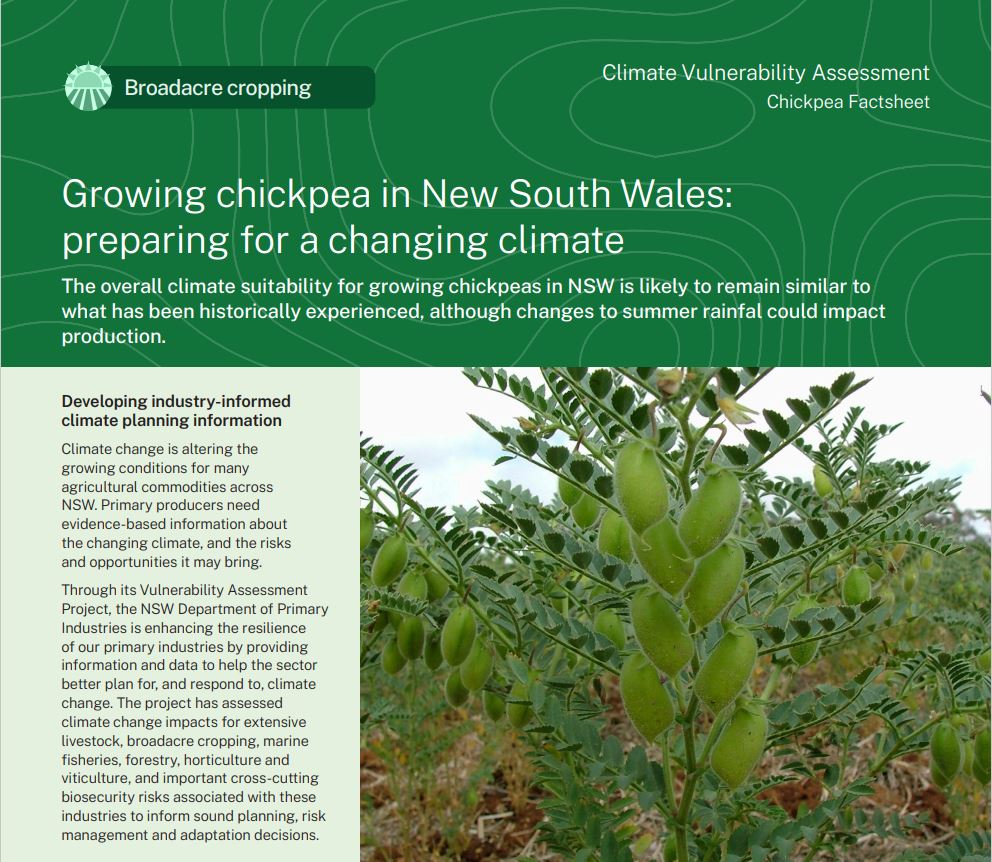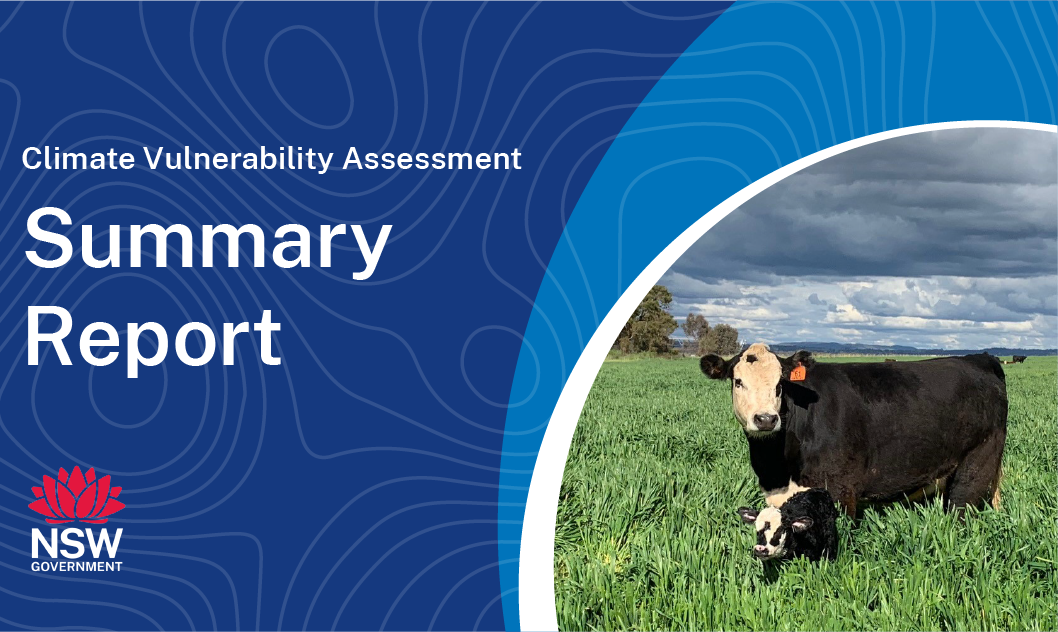What is the NSW DPI Climate Vulnerability Assessment? ⏷
Climate change is altering the growing conditions for many agricultural commodities across NSW. Primary producers need evidence-based information about the changing climate, and the risks and opportunities it may bring.
The NSW DPI Climate Vulnerability Assessments are enhancing the resilience of our primary industries by providing information and data to help the sector better plan for, and respond to, climate change. They have assessed climate change impacts for extensive livestock, broadacre and irrigated cropping, marine fisheries, forestry, horticulture and viticulture, and important biosecurity risks associated with these industries to inform sound planning, risk management and adaptation decisions.
How we assessed climate suitability ⏷
Climate projections were sourced from Climate Change in Australia’s ‘Application Ready Data’. This dataset is comprised of projections from an ensemble of 8 global climate models, each presenting a plausible future climate. The models differ in their projections, giving rise to uncertainty which is reflected in the confidence statements given in brackets. Care should be taken when interpreting these results.
The Climate Vulnerability Assessment is intended to highlight potential industry- or regional-level changes. Intermediate and high emissions scenarios were used in the assessments (RCP4.5 and RCP8.5), but these are not the only future scenarios possible. The inclusion of climate variables important to the commodities production was based on published research, expert knowledge and data quality and availability.
Learn more in the Climate Vulnerability Assessment Project Framework.
Climate impacts: what to expect
Chickpea growing regions are expected to maintain moderate climate suitability for growing chickpeas by 2050 under both emissions scenarios.
Chickpea vulnerabilities
- Rainfall patterns during the summer fallow period are likely to change, particularly in the north of the state. However, there is disagreement between global climate models regarding what these changes will be and whether climate suitability will increase or decrease as a result.
- Germination reliability is likely to be impacted due to reduced cool season rainfall in the north of the growing region (moderate confidence).
Chickpea opportunities
- An increase in mean temperatures is likely to reduce the likelihood of plant growth being halted due to cold winters in cooler regions of the state (high confidence).
- The changing climate may bring opportunities for the expansion of chickpea production in the south and to the east of the current growing area as temperatures during vegetative growth become more favourable (high confidence).
Adapting to the changing climate
Adapting to changes in rainfall
- The chickpea industry may need to consider sowing alternative crops or sowing chickpeas in summer (if rainfall permits) when low rainfall precludes autumn sowing of chickpeas.
Where can I find the climate suitability maps?
Maps of historical and future climate suitability for commodities were produced to demonstrate where in the state a commodity is likely to thrive or else be limited by future climatic conditions. The maps are not provided on these webpages but can be found in the Climate Vulnerability Assessment Summary Report (PDF, 41425.92 KB).
Chickpea Factsheet
(PDF, 5776.19 KB)

Summary Report
(PDF, 41425.92 KB)

 Chickpeas in NSW
Chickpeas in NSW